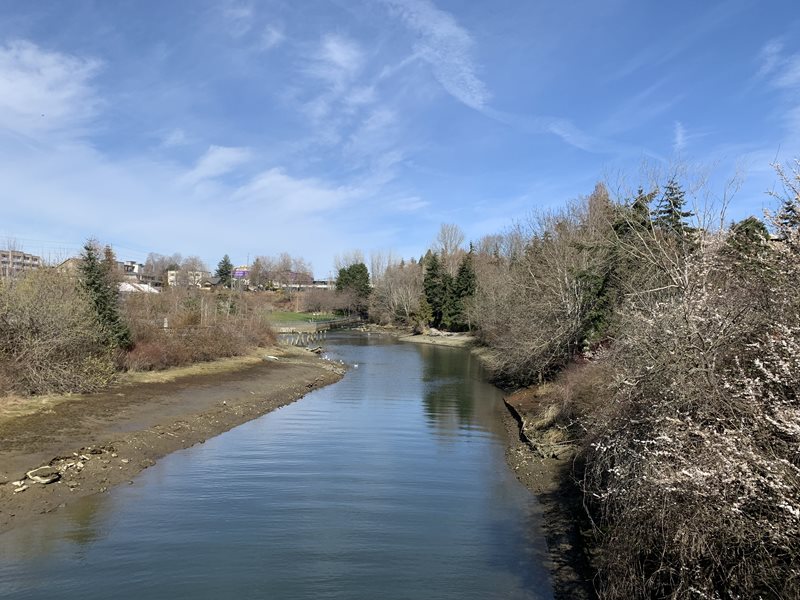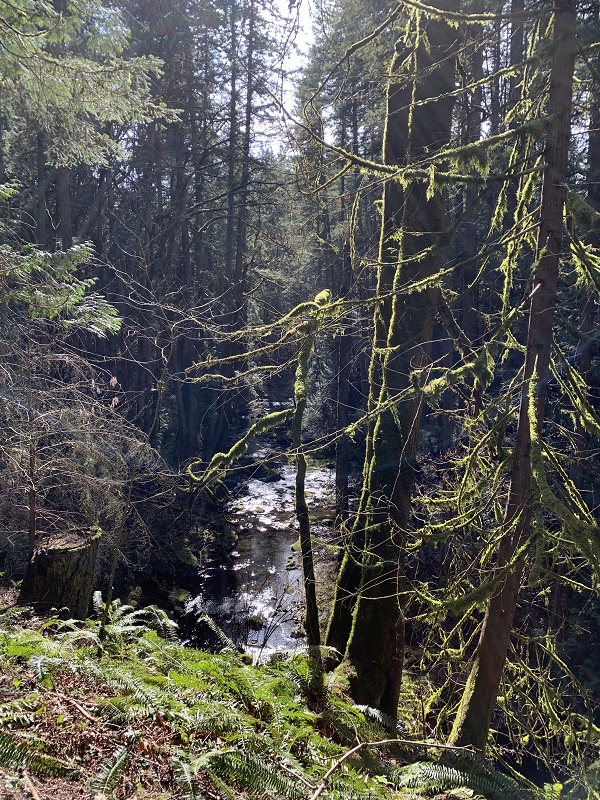
Several years of study and water quality monitoring show fecal coliform bacteria, and E. coli (Escherichia coli), are polluting the Whatcom Creek watershed. Both bacteria are commonly found in animal or human digestive tracts and feces. In other words, the watershed is contaminated with poop.
Whatcom Creek is a popular place for recreation, which could pose human health risks for those who come in contact with the contaminated water. These bacteria can make people sick and cause the closure of shellfish harvesting beds.
Where is this fecal pollution coming from?
The main sources of pollution are entering the watershed through improperly functioning stormwater systems and septic systems. Other contributors include wildlife, livestock, and pet waste.
Addressing pollution in Whatcom Creek
We have a draft water quality improvement plan — also known as a TMDL for Total Maximium Daily Load — a science-based water cleanup plan that identifies the main sources of bacterial pollution and determines what needs to change to reduce or eliminate it.
This includes:
- Ensuring proper operations and maintenance of storm-sewer systems and septic systems.
- Connecting to the municipal sewer system.
- Addressing pet waste and public recreational waste prevention efforts.
Whatcom Creek watershed has multiple tributaries listed as polluted for bacteria
The lower reaches of Whatcom Creek do not meet the state’s water quality standards, while the upper reaches likely do. The smaller streams within the Whatcom Creek watershed have high levels of bacteria. The greatest bacteria pollution reductions are needed in Fever Creek, followed by Lincoln, Hanna, and Cemetery creeks. These tributaries feed into Whatcom Creek, which requires comparatively less pollution reduction. By addressing the smaller streams as a priority, we hope to avoid spreading further contamination to the larger bodies of water.
To implement the Whatcom Creek bacteria TMDL and others nearby, we will work with local stakeholders in partnership with other state agencies.
Seeking feedback on draft plan
The draft Whatcom Creek bacteria TMDL is available for review. This draft water quality improvement report and plan address high bacteria levels in the watershed. Once finalized and implemented, this plan should ensure safe conditions for swimming and other recreational activities.
The draft report is available for review and comment from March 30, 2023, until 11:59 p.m. on April 30, 2023.
You can submit comments: Online via the eComments form (preferred), or by mail (postmarked by April 30, 2023).
Register for our informational workshop, taking place on April 12 at 3 p.m. During this virtual workshop, we will present an overview of the draft water quality improvement report and plan and will answer your questions. This workshop is not a formal public hearing.
What can you do to prevent pollution?
View of Whatcom Creek Falls Park
Although stormwater can carry residential and pet waste pollution, there are ways that individual people can help prevent harmful bacteria from polluting the water.
- Clean up pet waste and throw it in the trash.
- Perform regular septic system inspection and maintenance to prevent problems before they occur.
- Follow best practices for managing livestock manure, so it doesn’t come into contact with surface water.



